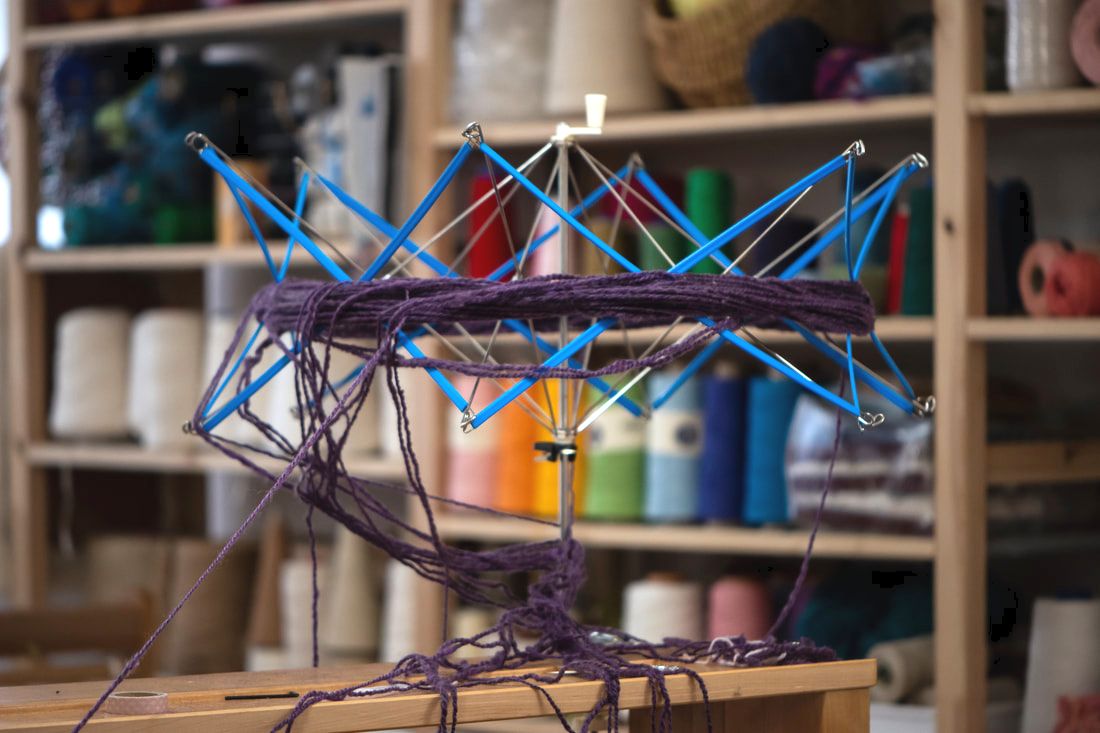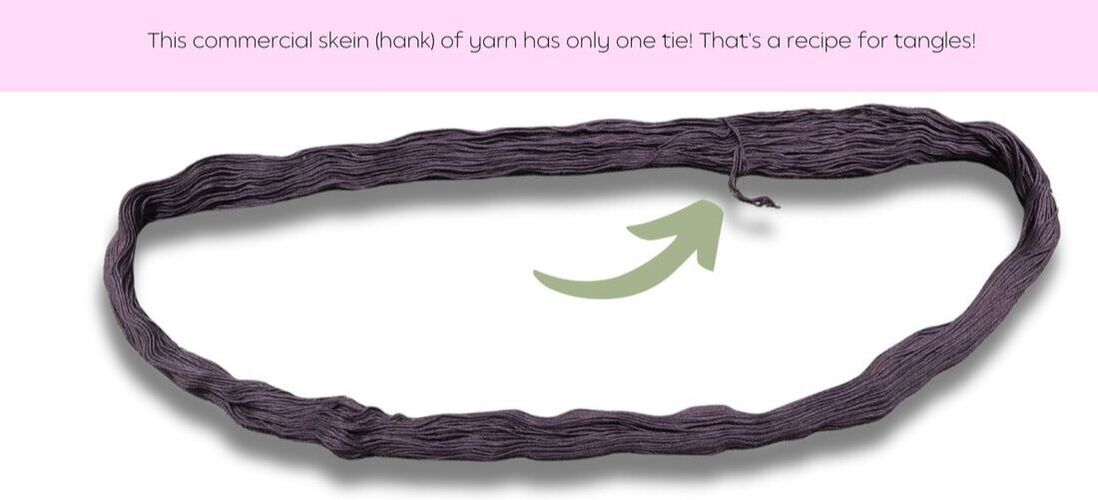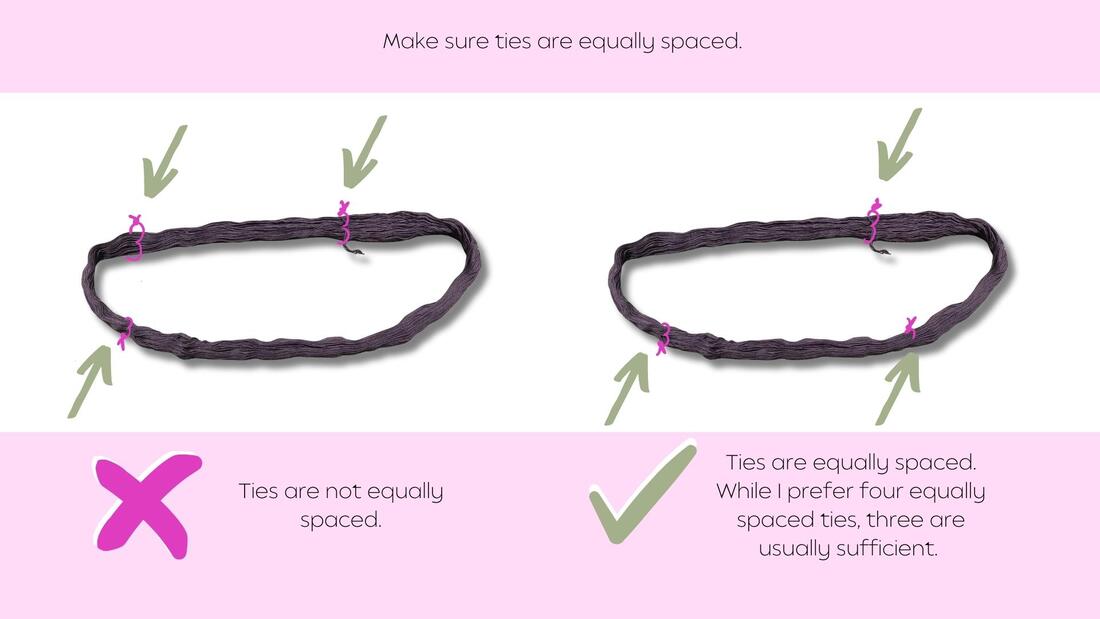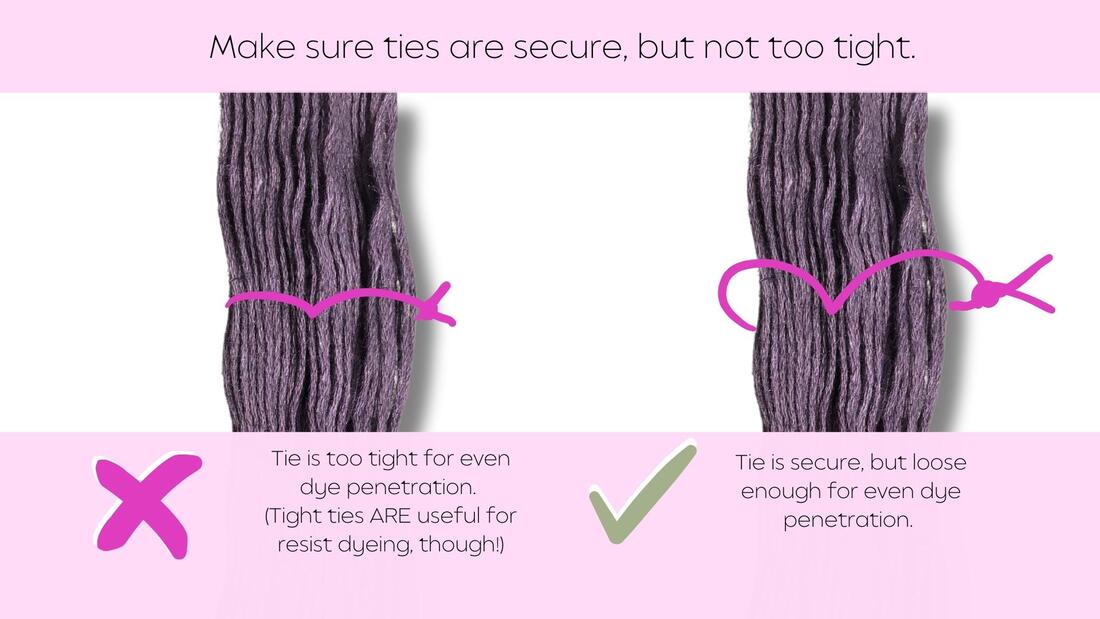|
A skein* of yarn is made by wrapping the yarn many times around some sort of measuring device – a swift, a niddy-noddy, or even a chair. In this state, it’s easy to tangle the yarn. So why is yarn often sold this way? First of all, this is the best way to wash and dye yarn. If the yarn were wound into a ball, then soap, water, or dye wouldn’t be able to penetrate all the way to the center. Plus, a ball could easily unravel while it’s wet, causing additional tangles. Second, measuring yarn in a skein is pretty simple – if you know the diameter of the skein, you’ll simply multiply that by the number of times the yarn goes around to get the total yardage. Lastly, yarn that’s wound into a tight ball can actually stretch out over time, leading to inconsistencies in yarn quality across the ball. Keeping it in the skein until you’re ready to use it can prevent this from happening. Since these are all great reasons to use skeins, how can we prevent them from getting tangled? How Tangles HappenUsually, tangles boil down to one of four problems:
If you don't have a swift, you can use the next-best thing: the back of a chair. Or get a patient loved one to hold out their hands and act as a swift for you. A bigger problem is if the skein didn't have enough ties in the first place. One or more pieces of yarn will flop over to the other side of the skein where they don't belong. You put the skein on the swift, but somehow it's tangled! It's really hard to spot the problem if you don't know what you're looking for. This can still happen if you have plenty of ties, but the ties are improperly spaced. The goal is to have all the ties equidistant from each other to prevent the tangles from happening. Tangles can happen when the yarn is floating around in water during dyeing or wet-finishing, especially if you're working in batches of multiple skeins. Wet yarn moves much more freely in water, and is easy to tangle at this point. If you finish your yarn with whacking, thwacking, or menacing, there are further opportunities for the yarn to tangle. Sometimes it's not really tangled, but becomes bunched up around a tie. This leads to sticky spots that feel like tangles when you're winding a ball or re-skeining the yarn. Tugging the skein to re-shape it helps with this problem. How you handle the yarn as you begin to wind your ball matters too. Sometimes a skein of yarn goes onto the swift with a twist. This makes it harder to unspool the skein and leads to a tangled feeling. This is because the yarn is having to travel in a spiral motion, and may be snagging on some other part of the skein. Badly removed ties can also create the feeling of tangles. If they're dragged down so that the yarn moves out of position too much, this can create some snags that compound on themselves as you wind your ball. Preventing Tangled SkeinsKnowing how tangled skeins happen can help us to prevent them! The first step is to wind your skein with an even tension. You don’t want it to be too tight, otherwise the beginning will be loose and the end will be tight. This creates floppy bits where it’s loose, and can lead to tangles. In general, you don’t want the skein to be wound tightly around your swift or niddy-noddy, but instead have a gentle, even tension. Secondly, you want to wind smaller skeins rather than huge ones. Four ounces is usually the maximum skein size I'd recommend. The bigger the skein, the more chances you'll end up with some sloppy bits. Sloppy bits lead to snarls! Then you need to put in your skein ties. These are loops of yarn that are tied in a figure-eight pattern around several sections of the skein. A minimum of 3 ties is the best practice, but 4 are even better. (Have I done fewer than 3 or 4 ties? Yes. Have I regretted it? Almost always!) If you're dyeing the yarn, be sure to tie the ties loosely to ensure even dye penetration. You want to make sure that the ends of the yarn are secured in these ties - otherwise, you will spend all your time hunting for those ends later on! If you're washing your yarn (for example, when wet-finishing handspun) or dyeing it, how you handle your yarn when it's wet is also important. You should never pick up the skein by a single strand of yarn. Instead, pick up by the ties to make sure you're getting the whole skein at once. If the yarn is soaking wet, be sure to support the extra weight so it doesn't stretch out. When a skein of yarn is submerged in water, the strands are going to float more freely - just like how your hair fans out when you're underwater. If you have multiple skeins in the same water container, this can easily lead to strands getting caught on each other. When this happens, don't keep pulling it up, as this will make the tangle worse. Instead, poke around to try and find what it's snagged on, release it, and then lift by the ties. Once you've finished with dyeing or washing, find the ties, and re-form the shape of the skein. A gentle tug will get things re-aligned. Don't pull too hard, as most yarns are more fragile when wet. If you plan to sell your yarn, it's considered a best practice to re-skein it after wet-finishing or dyeing. This will help get any possible tangles smoothed out, and leads to happier customers. Before re-skeining your yarn or winding it onto a ball, be sure to place it onto a swift or other fixed object to keep it in a continuous loop. Be sure it goes on straight - any twist in the loop will create a feeling of tangles! When you untie your skein ties to wind the yarn into a ball, be sure to remove the ties gently. Pay close attention to the ends of the yarn. If you drag them through the skein, you're going to change its position and risk creating a tangle. Fixing TanglesSometimes if a skein starts out feeling tangly, it's best to wind the ball from the other end. This works more often than you might expect! Often, gentle strumming of a skein and slightly opening out the strands in a tangly area will release a simple snag. If you have a single strand that jumped into the wrong side of the loop, be sure to keep it from wrapping around the shaft of your swift. It may be possible to keep going! But if you do end up with massive tangles, it's not the end of the world. Tangles often look worse than they really are, and there are a few things you can do to keep from making them worse. Most importantly, be patient and go slowly. Your skein didn't start as a knot - all you have is a bunch of strands that have gotten unruly. If you try to go too fast, and pull to tight, you'll create a knot that may be difficult to untie. Find the other end of the skein and gently start rolling a ball, going over and under loops as you come to them. This is a time consuming process, and one you want to avoid if you can. But if you're patient and work slowly, it's often not that hard to do. Then you can get to the fun part - actually using your yarn! *technically what I’m talking about is called a “hank.” But since it’s often referred to as a skein, I refer to it as such throughout this article. Because…you know, SEO and how the Internet finds things.
Comments are closed.
|
Archives
January 2024
Categories
All
This website uses marketing and tracking technologies. Opting out of this will opt you out of all cookies, except for those needed to run the website. Note that some products may not work as well without tracking cookies. Opt Out of Cookies |




 RSS Feed
RSS Feed